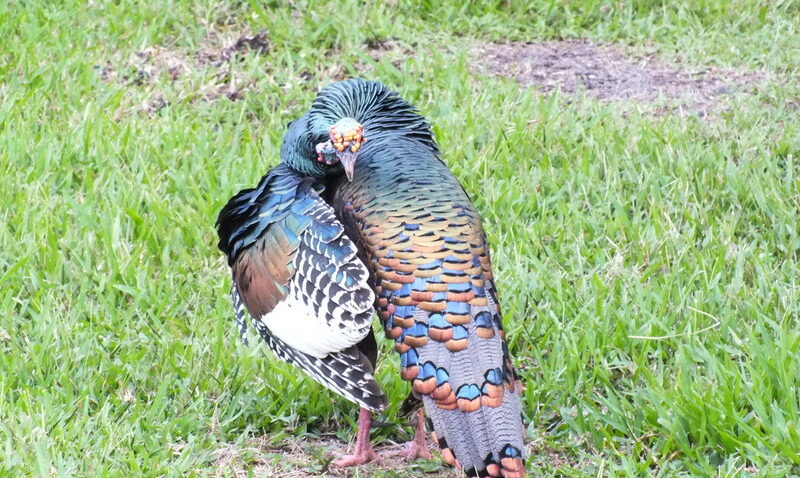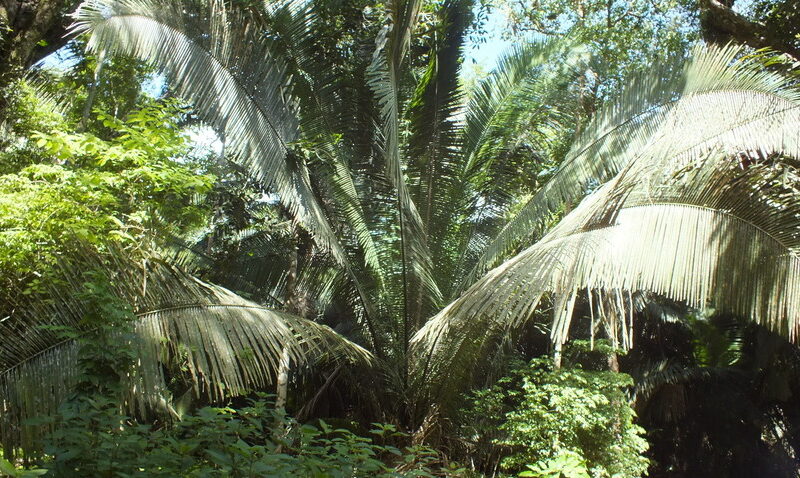Ocellated Turkey
Species Data
Class: Aves
Order: Galliformes
Family: Meleagrididae
Scientific Name: Meleagris ocellata
IUCN Red List status: Near Threatened
Description
The Ocellated Turkey looks similar to the Common Turkey but the males in particular are much more colourful and larger, growing to a metre in length. They have inflatable wattles on their heads and a startling bare blue head and neck. The word ‘ocellated’ derives from the peacock-like ocelli (eyes) on the tail feathers.
Behaviour
The Ocellated Turkey is an omnivore and ground feeder, with a diet that includes fruit, insects and grass seeds. The birds are shy, but can be noisy, with males and females having different and distinctive calls. The male call includes a gobble reminiscent of the domestic turkey, while females give a repeated clucking alarm call.
The females lay large clutches of eggs in a shallow scrape during a short breeding season running from March to April. As many as 15 eggs have been reported, but the usual average number is more like 12.


Habitat
The Ocellated Turkey is found in Southern Mexico, Northern Guatemala and Belize, preferring to live among the edge of forest. During the breeding season it also uses more open habitat and seasonally flooded areas.
Threats and Conservation
The Ocellated Turkey is popular with hunters, and increasingly rare over much of its range, to the point that in some areas it has disappeared completely. The IUCN classes it as Near Threatened and specifically refers to the protection of the Rio Bravo Conservation Area as a valuable conservation action for this species.
Habitat destruction for agriculture is a further threat. There are also reports that Ocellated Turkeys have been affected by disease outbreaks among domestic poultry, though this is unproven.
Protected by the following WLT Projects
References
IUCN Red List: http://www.iucnredlist.org/details/22679529/0
